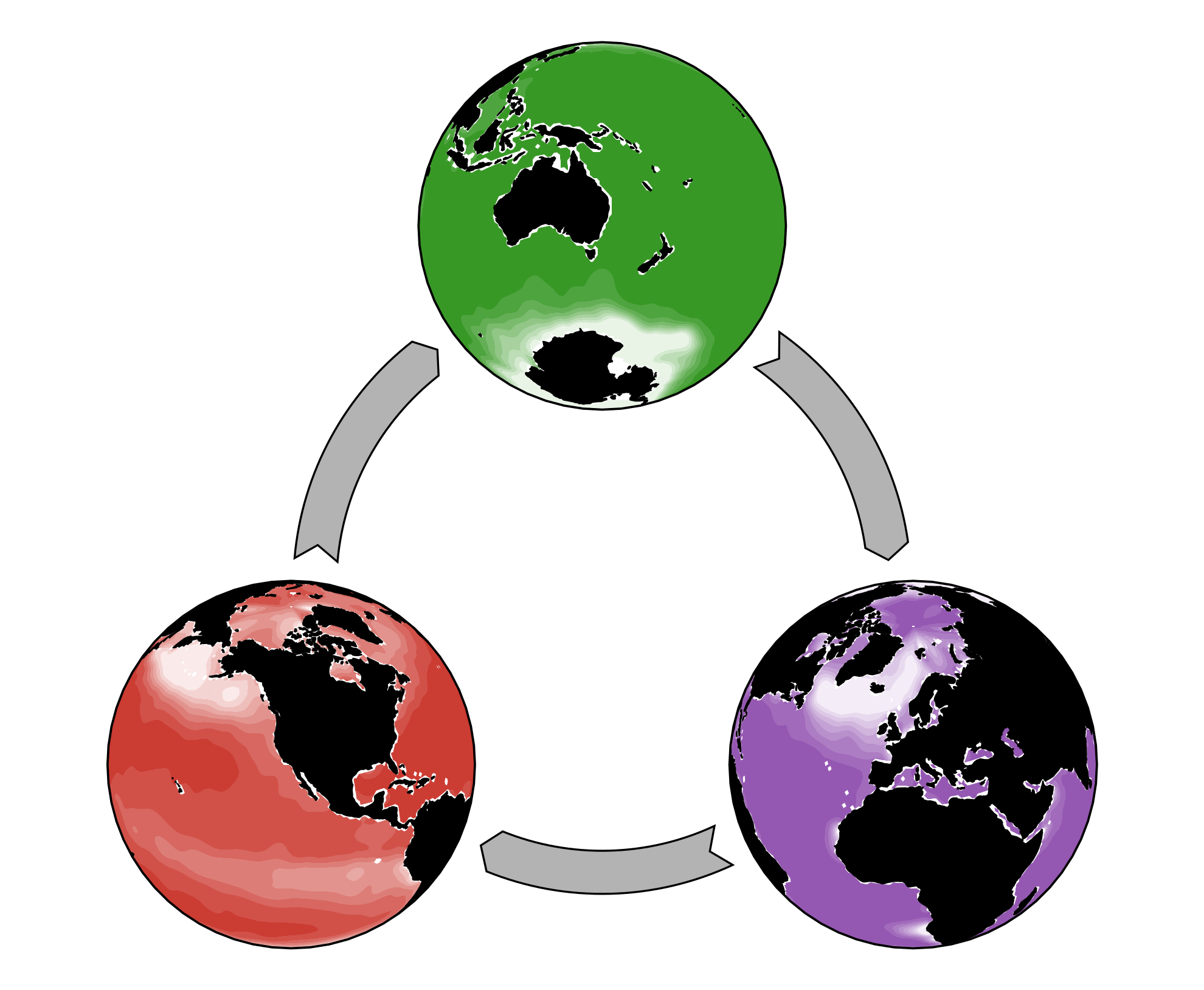
AIBECS.jl
The Algebraic Implicit Biogeochemistry Elemental Cycling System
If you are using the AIBECS for the first time, you must add it to your Julia environment, by typing
]add AIBECSat the REPL.
This documentation is organized in 4 parts:
1. Tutorials
If you want to try AIBECS for the first time, this is where you should start.
- The ideal age tutorial is a good place to start. Generate a simple linear model of an idealized tracer in a few lines of code.
- The radiocarbon tutorial is a little bit more involved, with some nonlinearities and more advanced use of AIBECS features and syntax.
- The coupled PO₄–POP model tutorial couples 2 interacting tracers, dissolved phosphate and particulate organic phosphorus (POP).
- The dust model tutorial simulates some fictitious metals being injected at the ocean–atmosphere interface and being reversibly scavenged.
- The river discharge tutorial similarly simulates another fictitious radioactive tracer that is injected in the ocean by rivers and that decays away as time passes.
- The groundwater discharge tutorial is almost identical to the riverdischarge tutorial, except it uses groundwater discharge data.
2. How-to guides
Here you will find goal-oriented walk-through's.
- Parameters guide
- Plotting basic things
- Plotting cruise/transects data
- Estimate fluxes
- How to simulate, i.e., solve or timestep your model (coming soon!)
- How to optimize parameters (coming soon!)
- How to simulate sinking particles (coming soon!)
3. Explanation/discussion
Here you will find more general discussions and explanations surrounding the AIBECS.
4. Reference
This section contains the docstrings of (almost all) the functions available in AIBECS.
The AIBECS is being developed primarily by Benoît Pasquier (postdoc with Seth John at the University of Southern California). If you use the AIBECS in your research, please cite it! Similarly, if you access data from within AIBECS (like the OCIM or OCCA ocean circulations) please cite them too.
This package is in active development, so nothing is set in stone, and things may be broken sometimes. And if you have any suggestions or feature requests, do not hesitate to start an issue, or better even, submit a pull request!